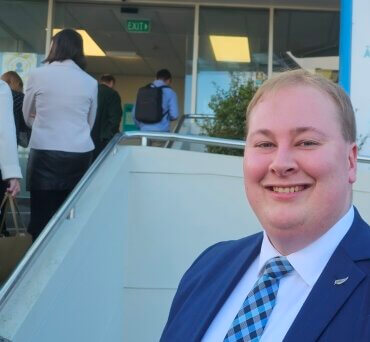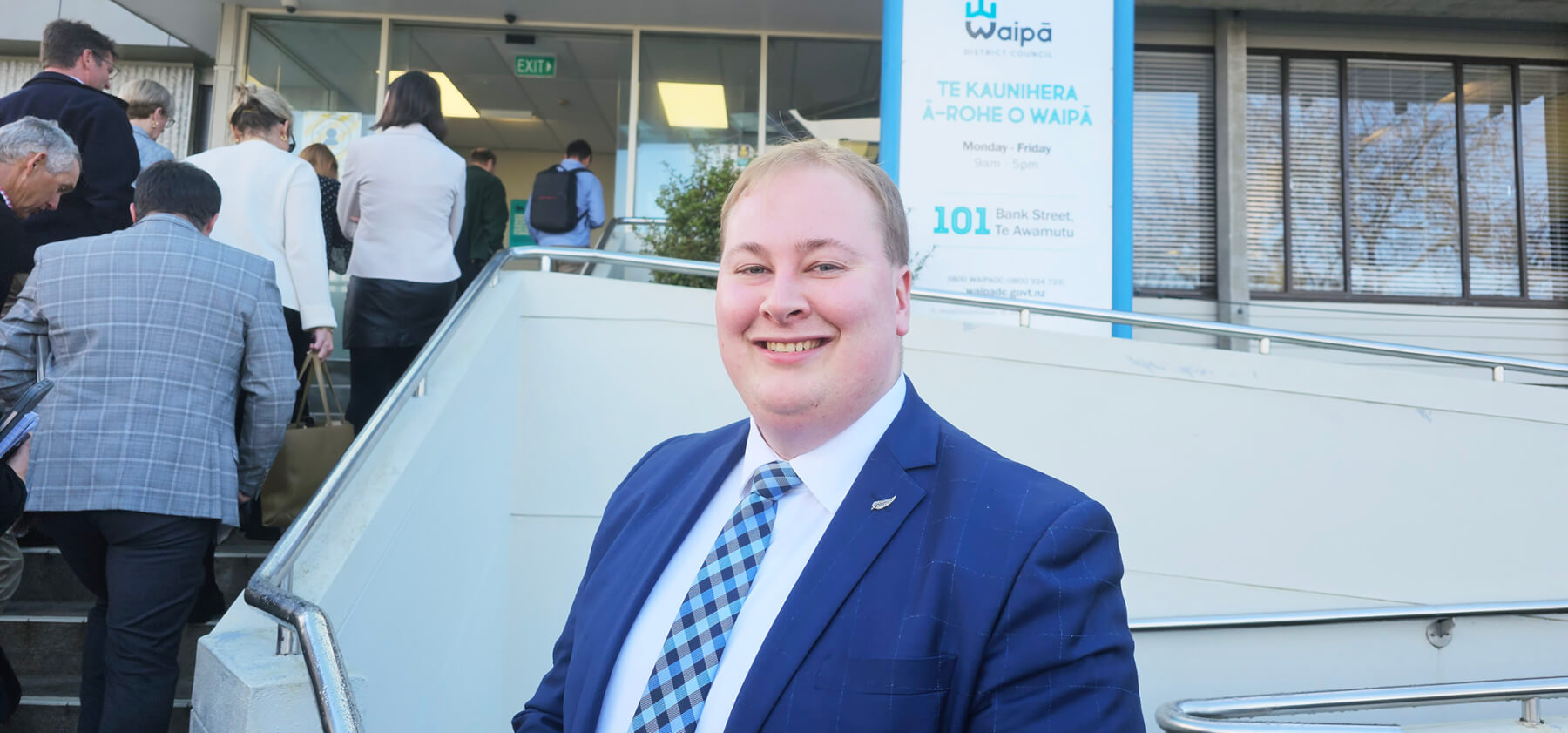
A fire alarm interrupted Waipā councillors’ questions to economist Brad Olsen following his State of the Nation speech this week, but it provided time for an interview with senior writer Mary Anne Gill.
Brad Olsen kicked into the Waipā District Council carpark during a fire alarm this week.
Leading economist Brad Olsen has told Waipā residents to prepare for fewer infrastructural projects in the short term across the district because of huge increases in the costs of building roads, bridges and footpaths.
Talking to councillors at a workshop before the Strategic Planning and Policy committee meeting this week, the Infometrics expert said his company was increasingly telling councils to have a greater level of priority.
“That means a difficult and important conversation with your communities.”
Do the top five (projects) and the six to 10 would have to wait.
“It means saying no to some stuff,” he said.
But elsewhere in the presentation, Olsen was generally positive about the outlook for the district in his fifth annual State of the Nation address for Waipā.
Spending is up and “there are now clear economic indicators, more people, they’re excited, they’re energised.”
While the district had a lot of economic activity coming through – thanks to the investment in industrial and commercial areas in places like the airport – increasingly other districts were being seen as attractive.
South Waikato was one district providing competition.
“Waipā did avoid the much larger hit that the national economy did during Covid. There is a lot of momentum behind the Waipā economy.”
He said that included strong levels of employment growth, particularly among Māori which was up eight per cent. Total growth of 3.1 per cent was double the national average.

Brad Olsen
The district has the 14th best economic outcome among all 63 territorial authorities but those ahead of Waipā – like Waimate in the South Island – were coming from a lower base, said Olsen.
Employment in the primary industries, construction, manufacturing, retail and science and technology leads the way.
Having those technical services in fifth position was good news for Waipā because it is a group that increasingly works from home and chooses to live in this district, he said.
Accommodation, food services, education and health were growing.
House prices in the district had not declined as much as other districts and importantly were now above 2021 but lower sales levels came from increased borrowing pressure from banks.
Olsen told The News “continued levels of growth” had marked his tenure as the council’s economic advisor.
“Waipā was already in a strong position for the pandemic with the primary sector a big part of that and so to was high level of construction and investment over the area.”
The unlocking of Waikato Expressway added to that.
‘Waipā’s one of the strongest economies we’ve got. It’s come into its own right now, it’s seen as a destination, a place people want to move to, it’s got great lifestyle opportunities and affordability.”
A lot of the things people don’t want, stays in the metros, he said.
He was not surprised at the number of retirement villages either built or under construction saying it represented a lifestyle change for people, but he warned the way population growth was happening, there would not be as many younger people to care for them.
“It’s going to be difficult to resource the population to the same degree, that means we think about the investments now into the technology.”
Olsen is not old enough to have teenagers preparing for a future but if he did, he would be pointing them towards the professional services such as IT and technology.
“The primary sector still has a lot of opportunity, that is our bread and butter a lot of the time. Thinking about how to diversify.
“We know climate change is coming we know there are adjustments happening over time but is there diversification for the Waipā district into horticulture, or into some of the agritech or advance manufacturing. There are opportunities there,” said Olsen.

Waipa District councillor Mike Montgomerie chats to economist Brad Olsen watched by Strategy group manager Kirsty Downey in the council carpark during a fire alarm. Photo: Mary Anne Gill.









